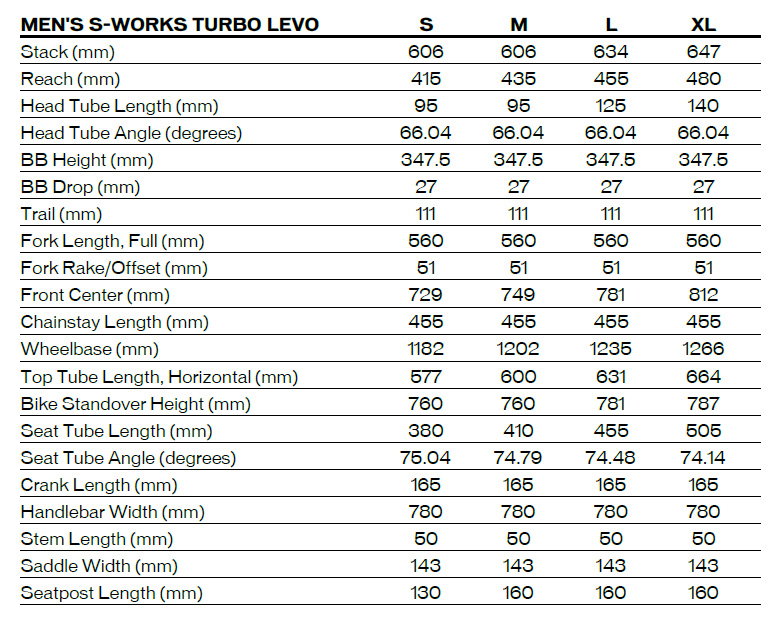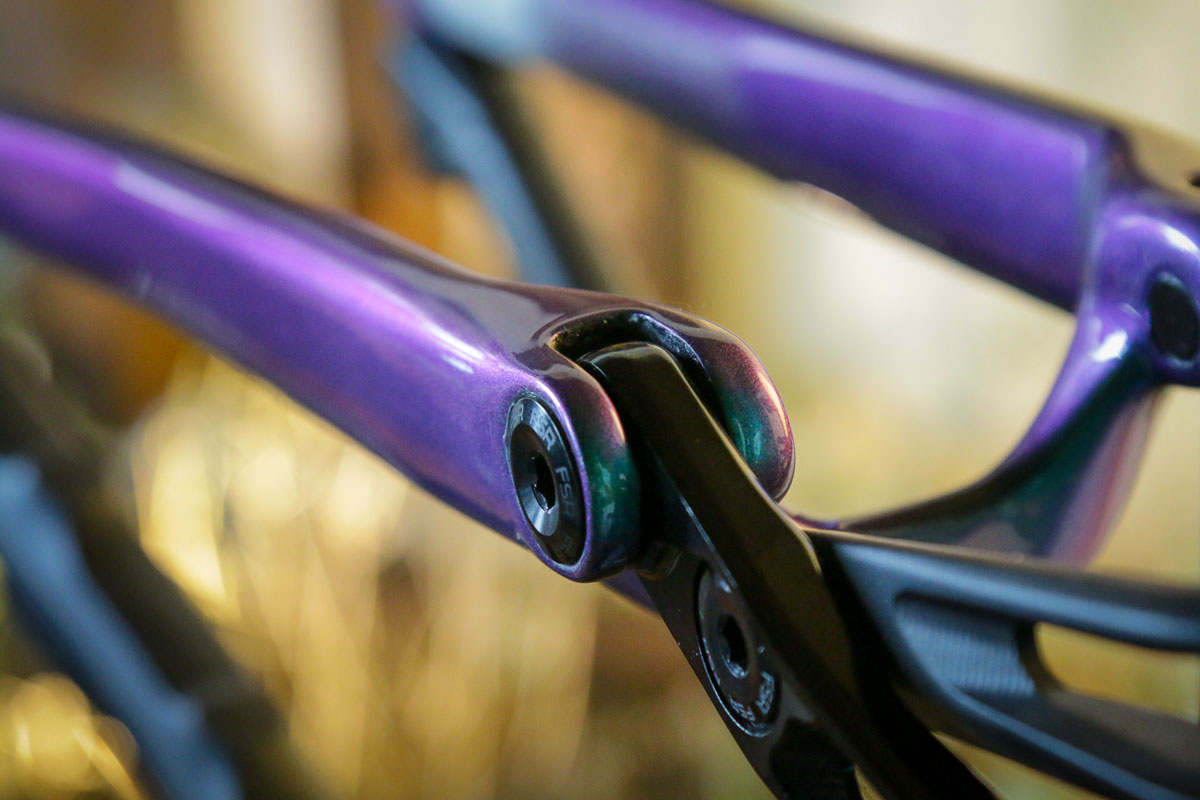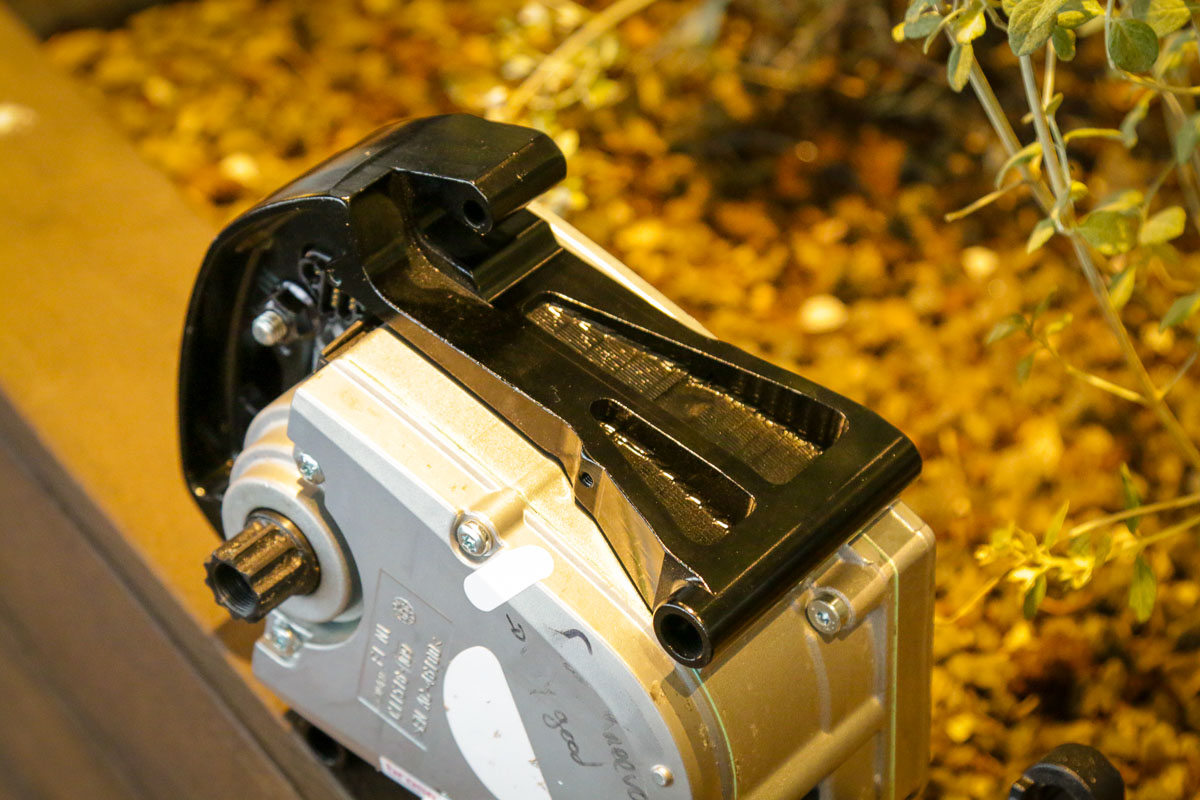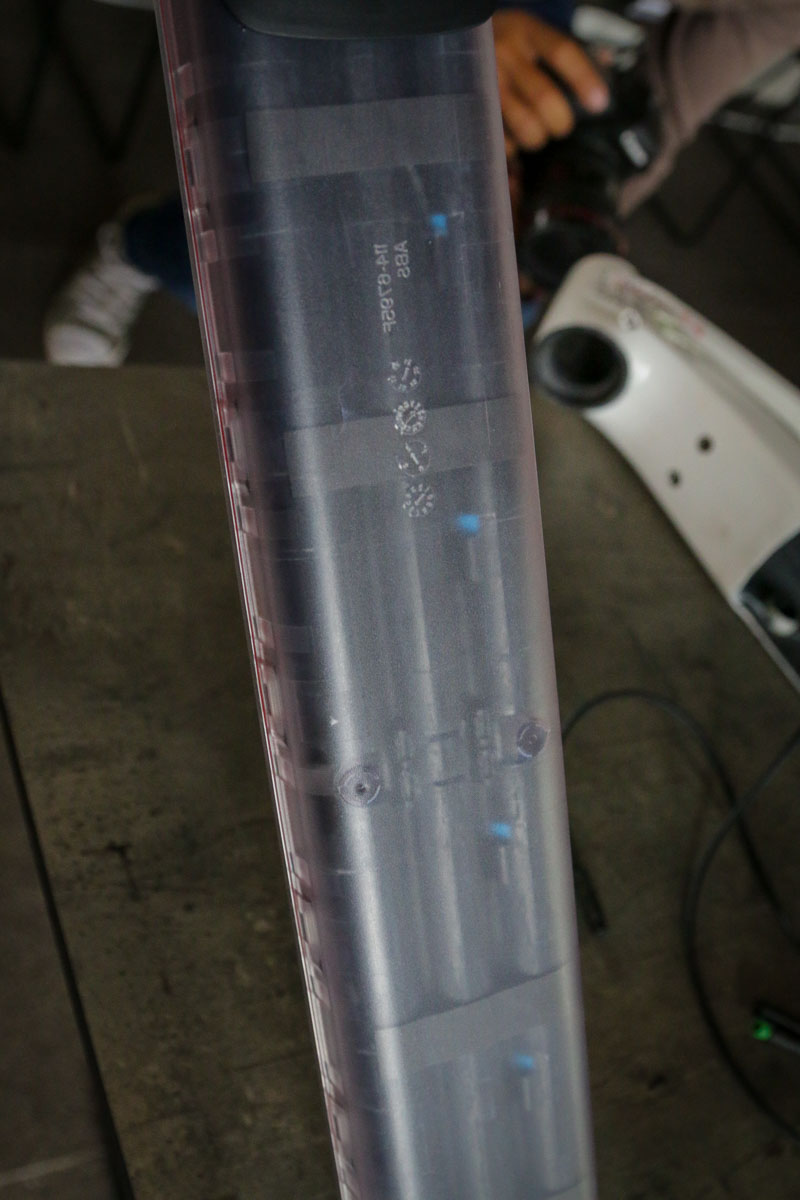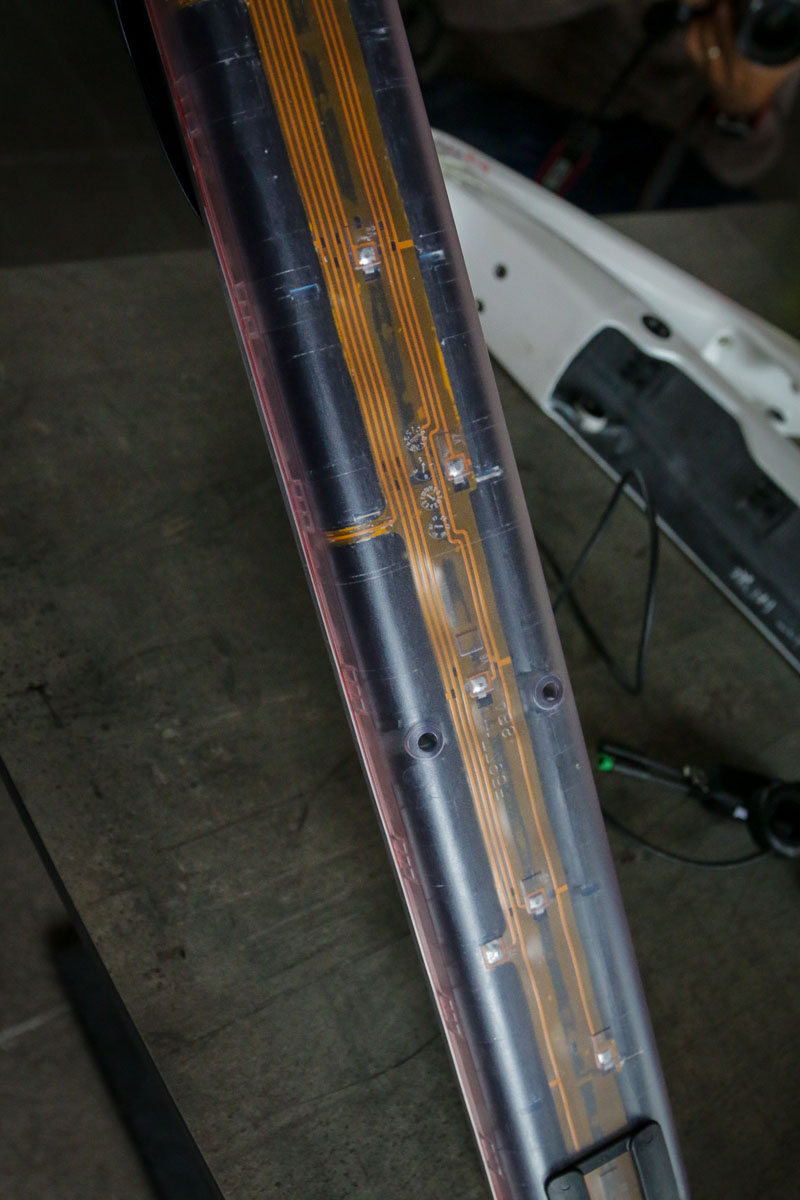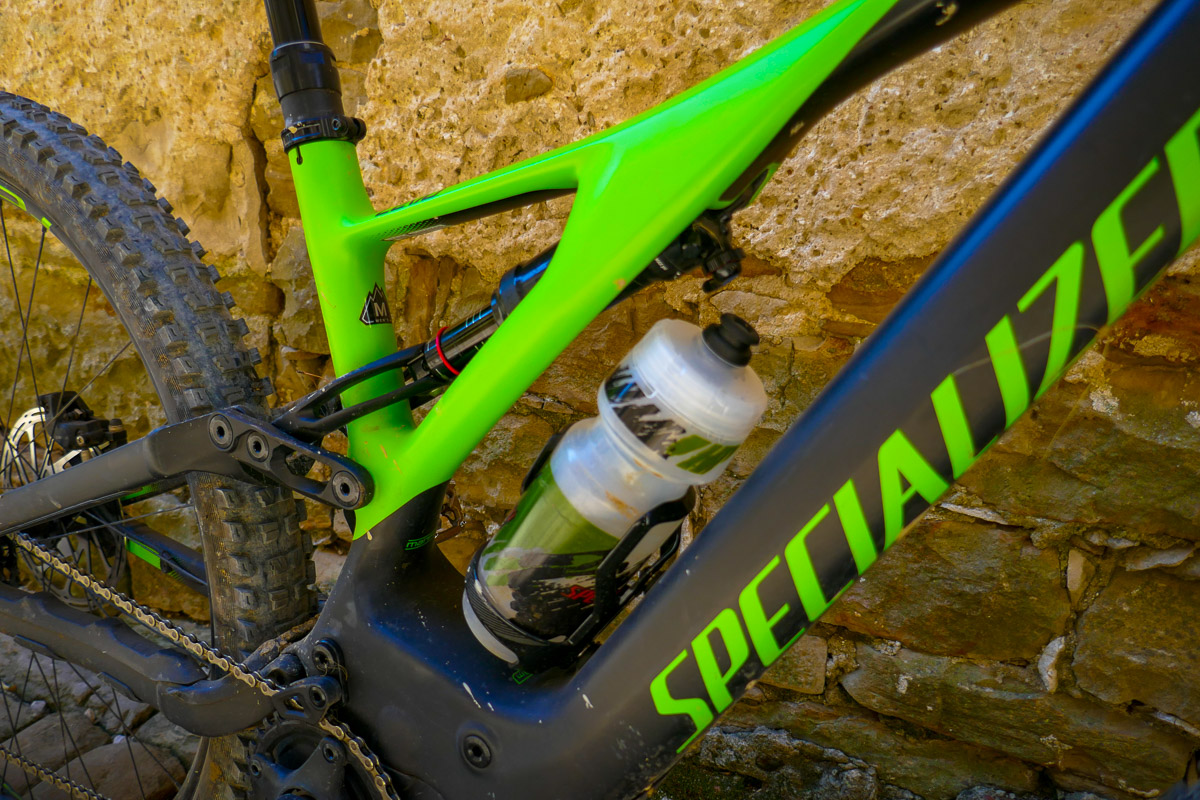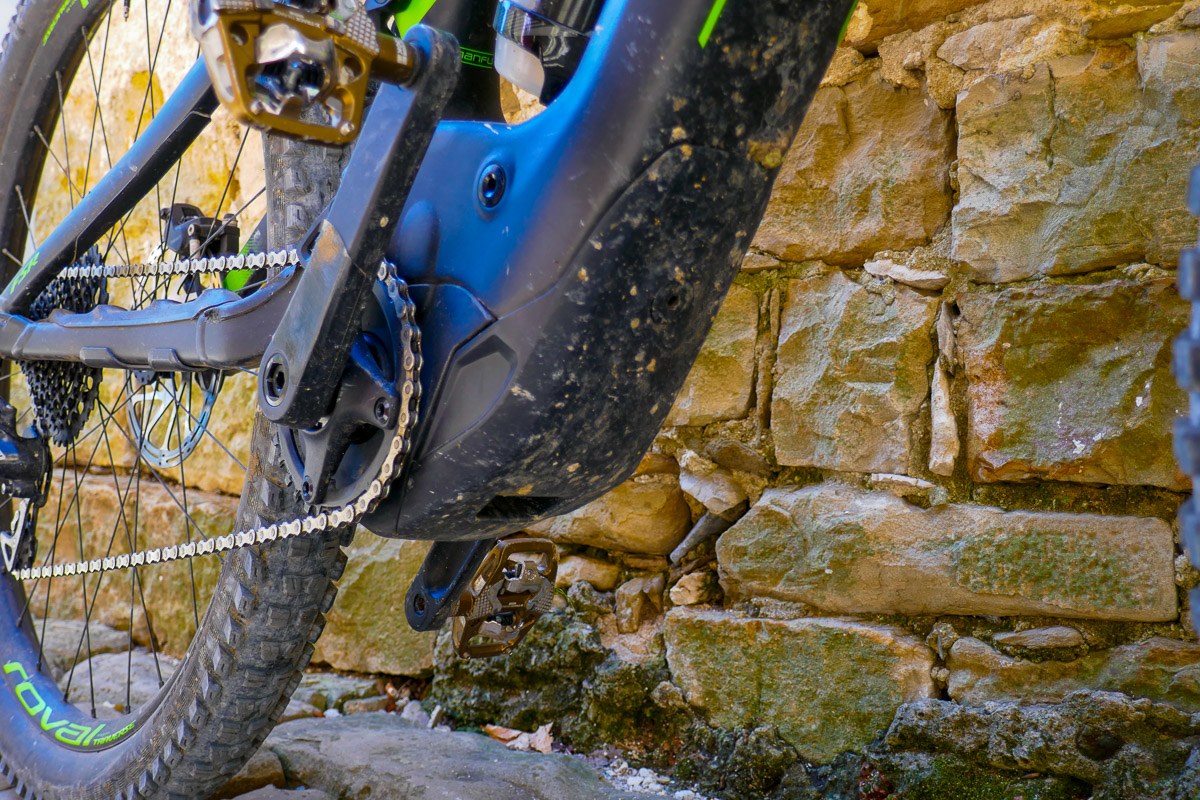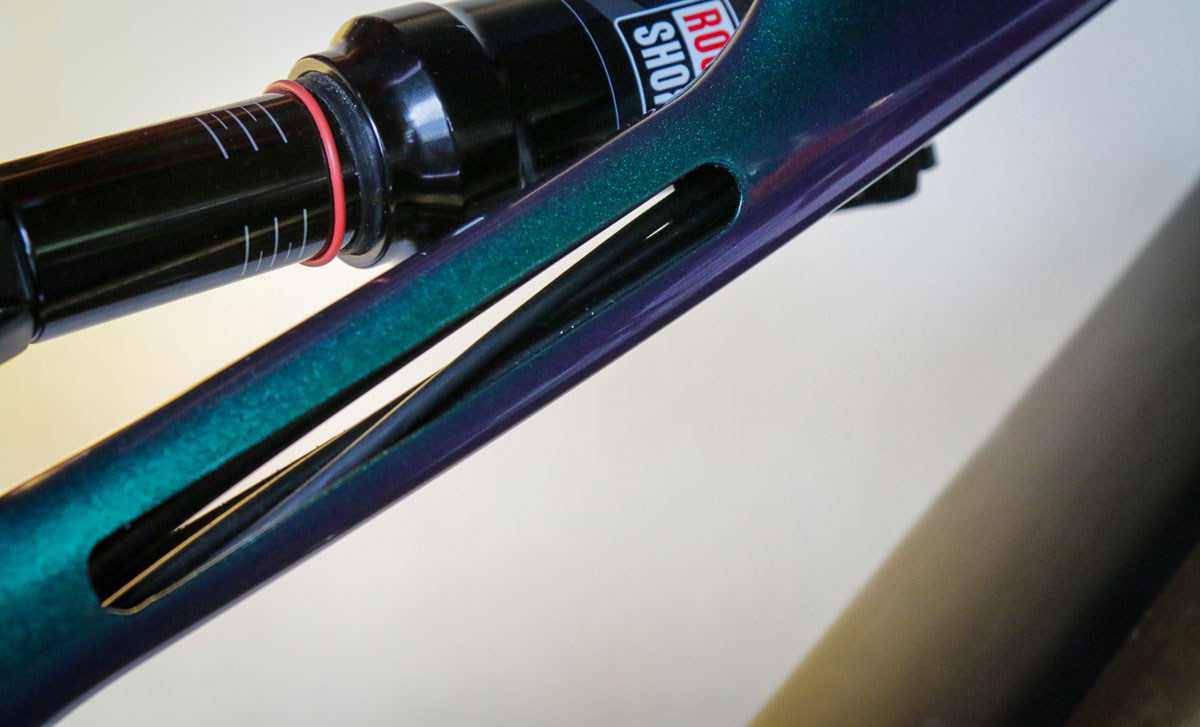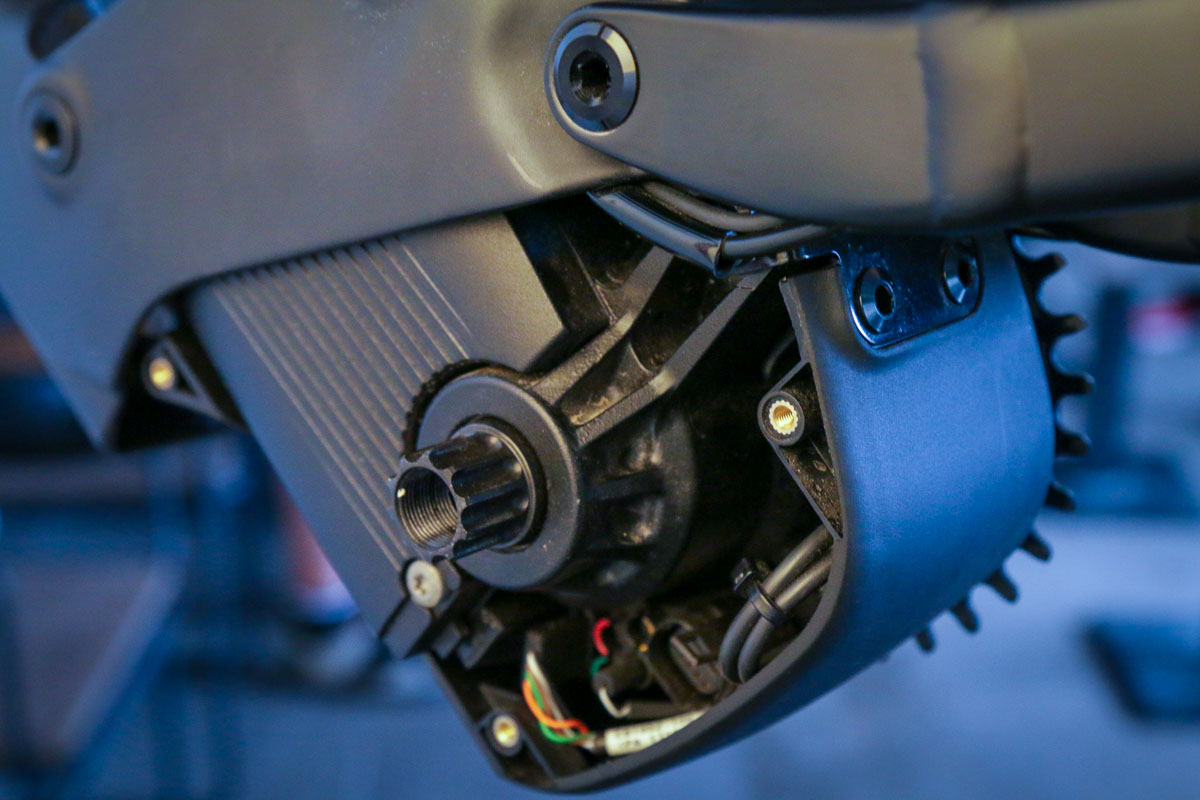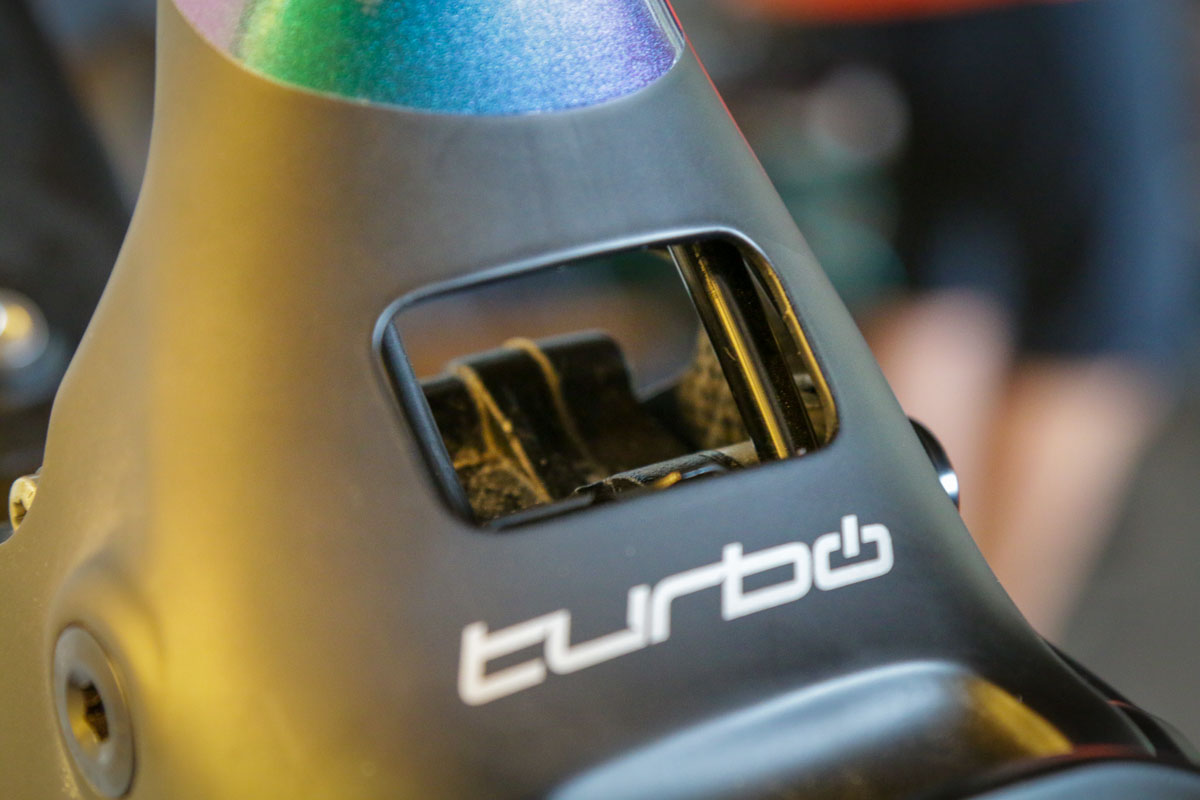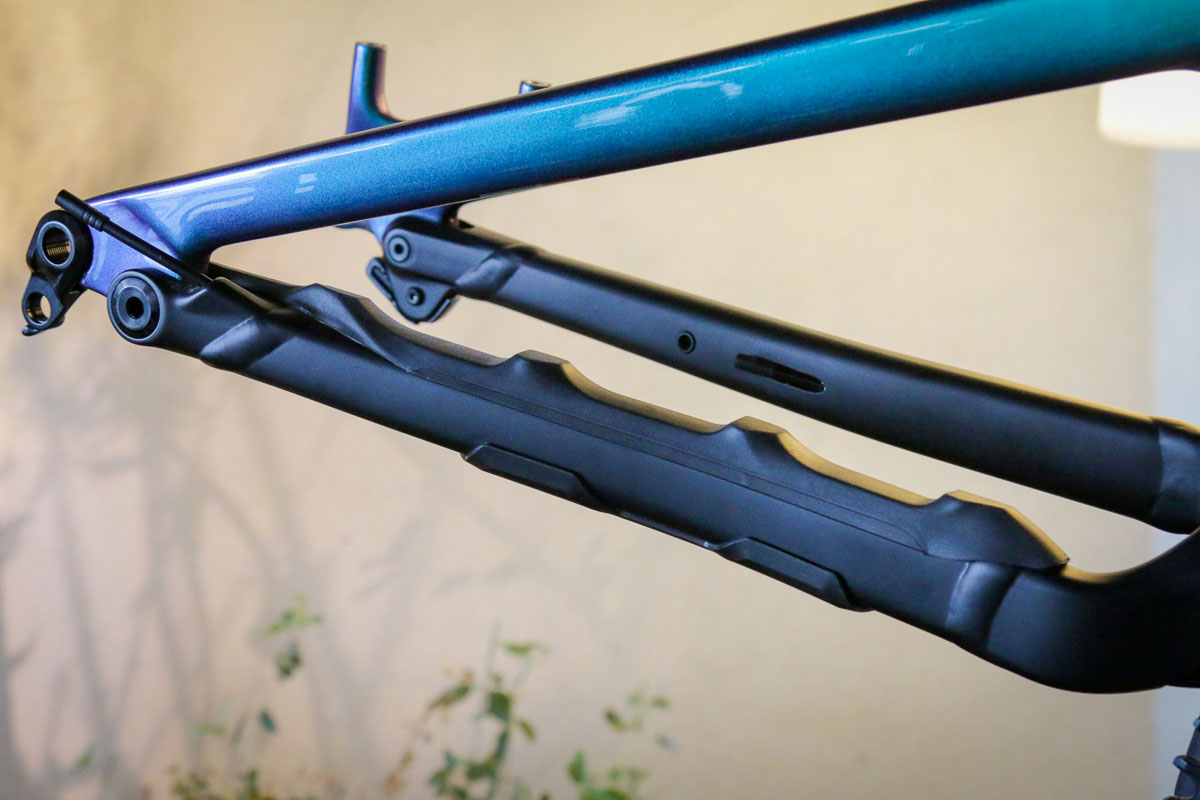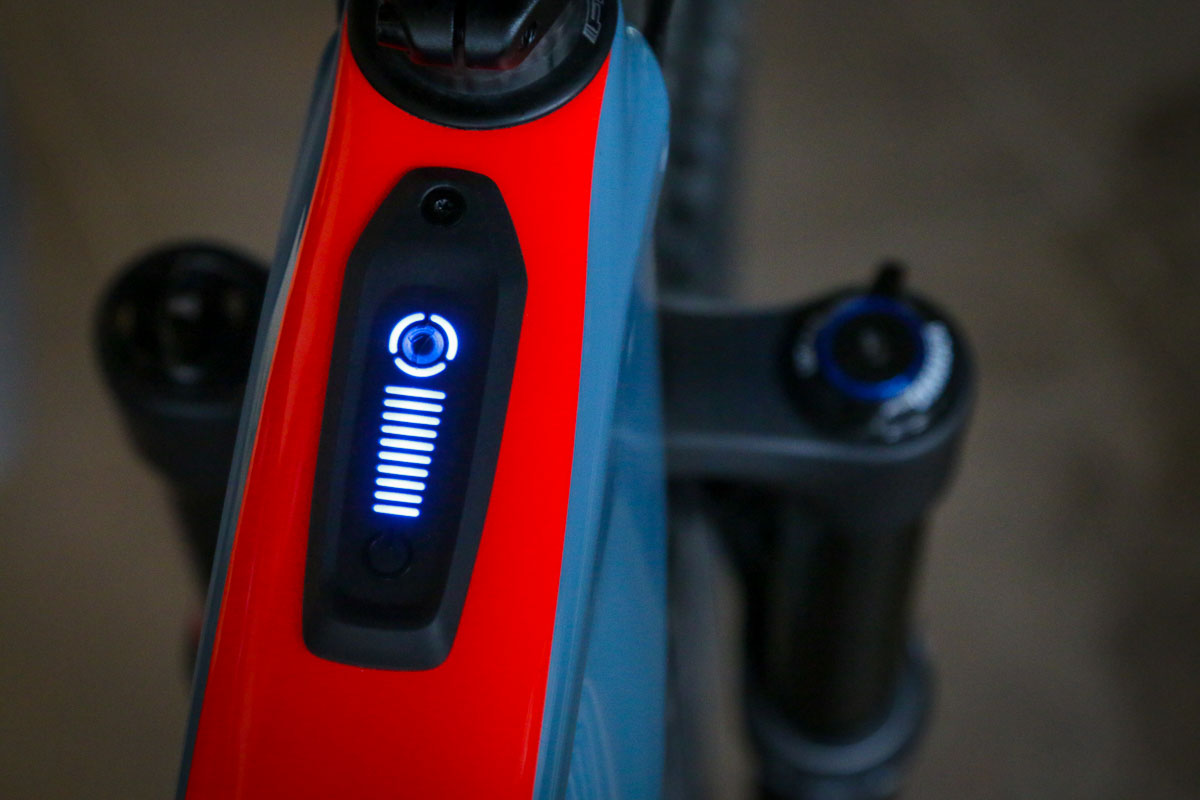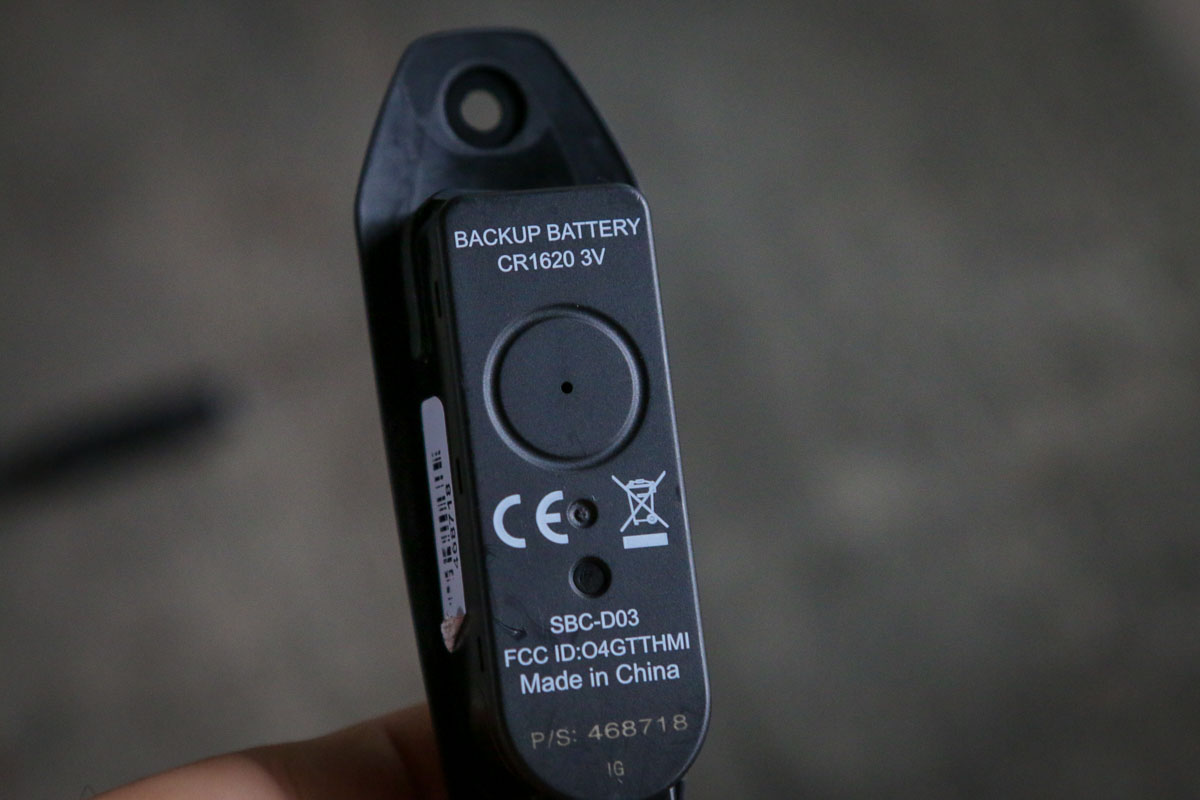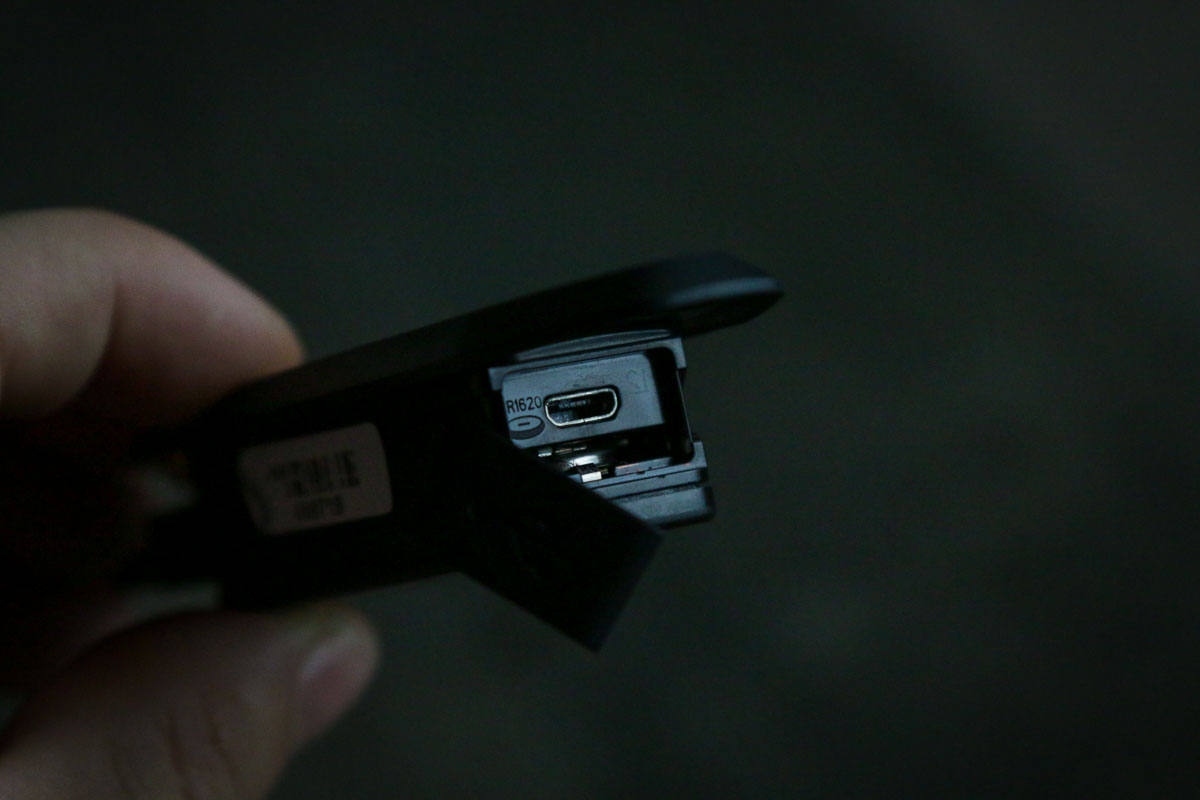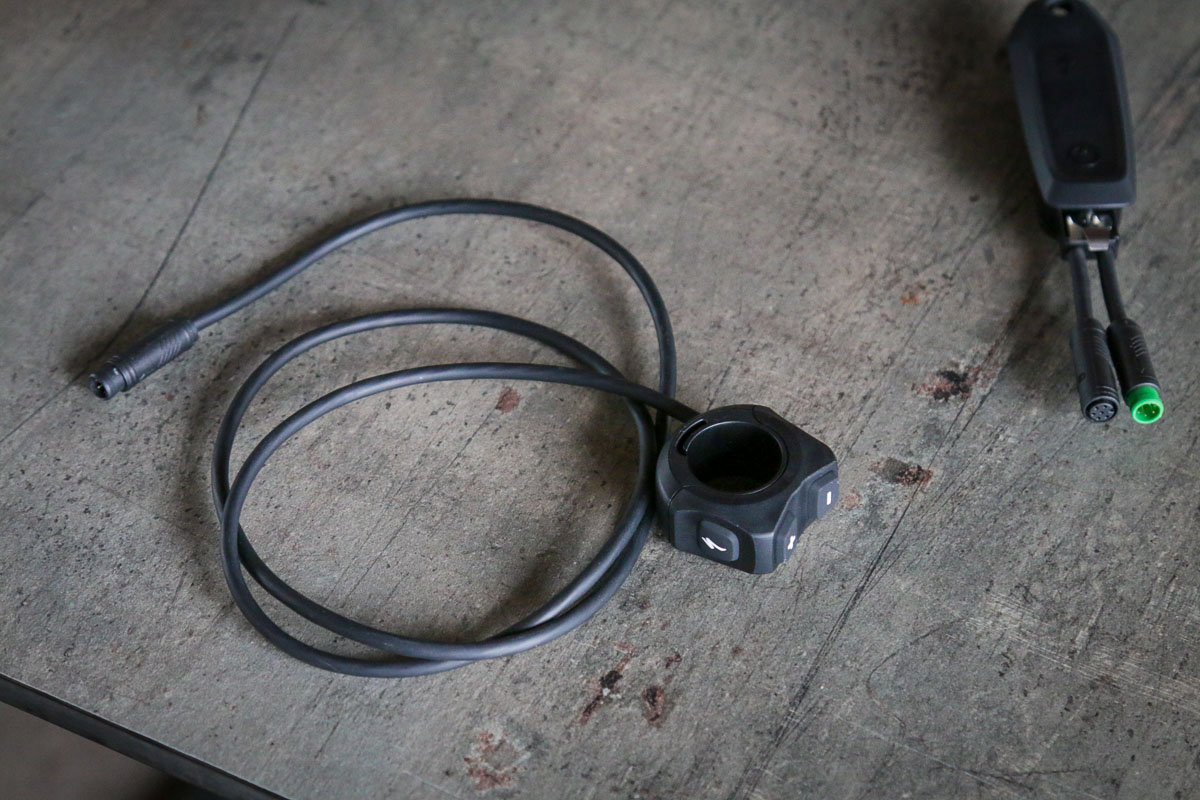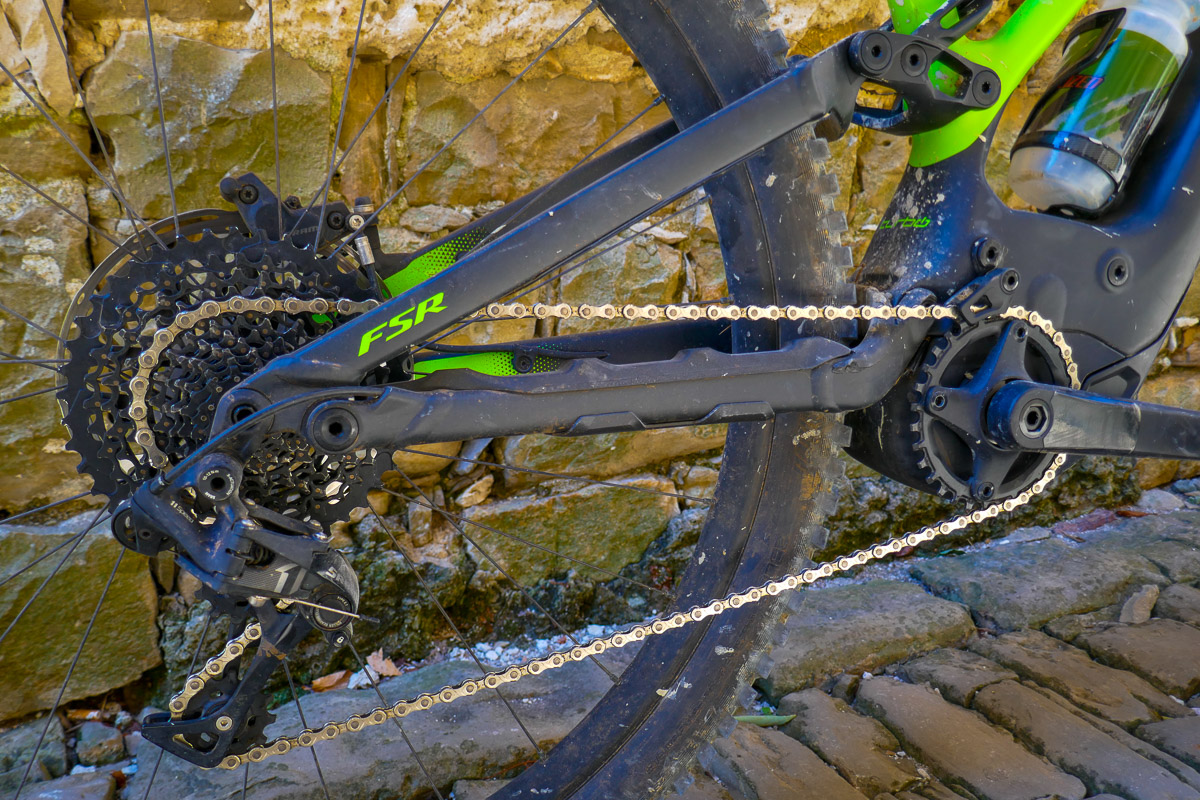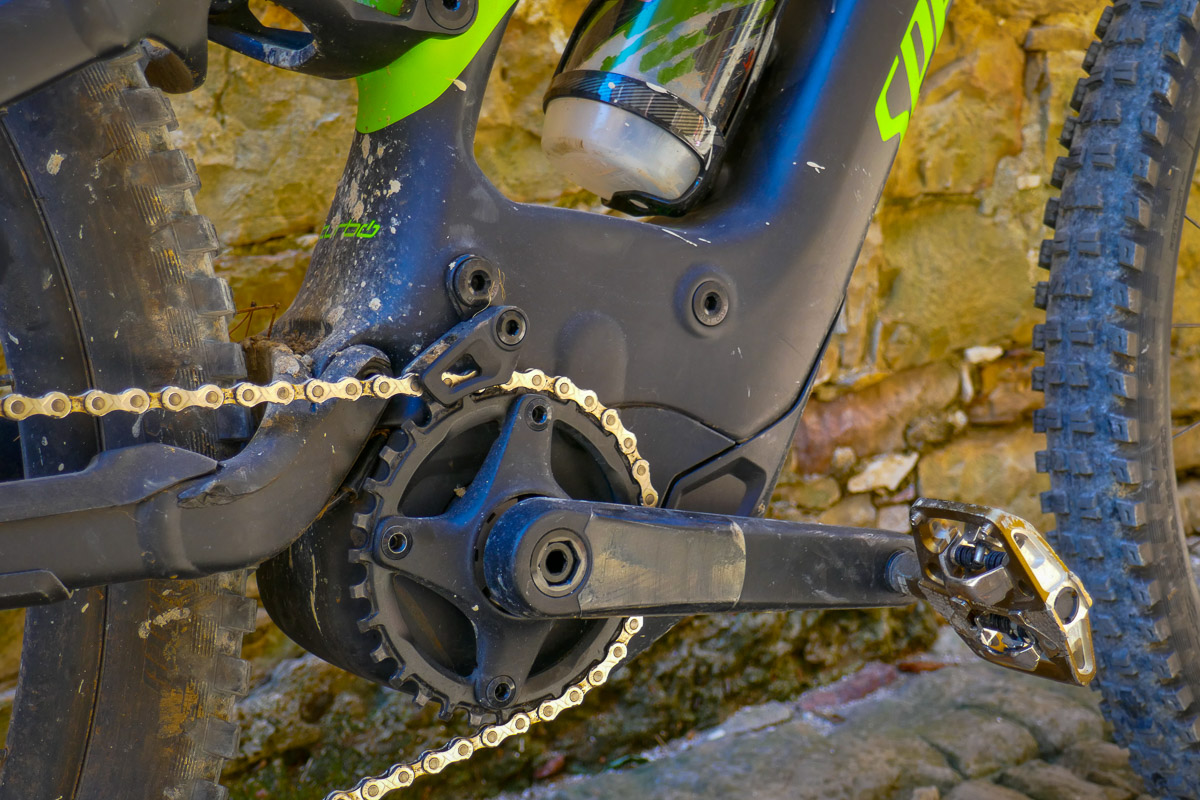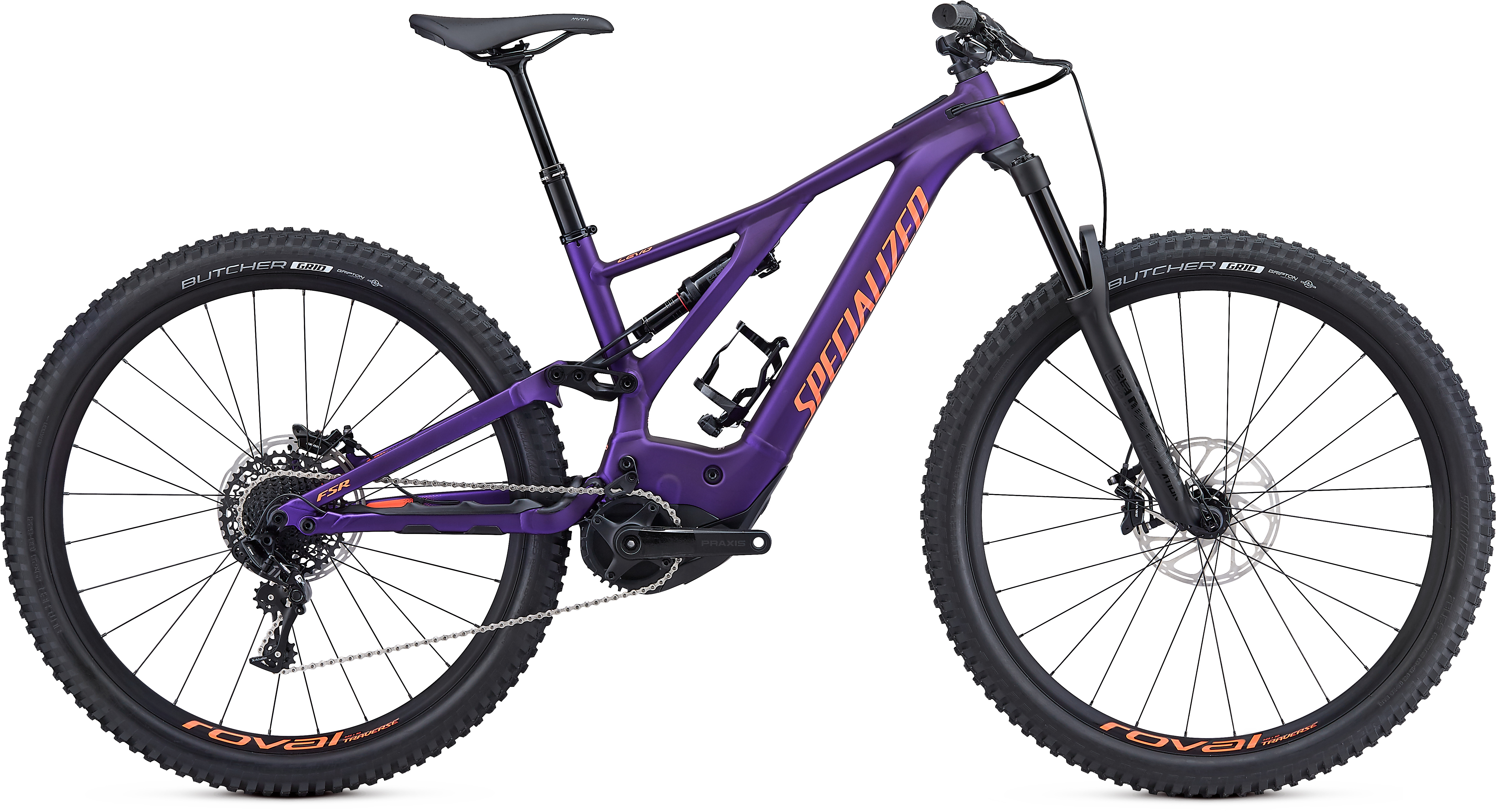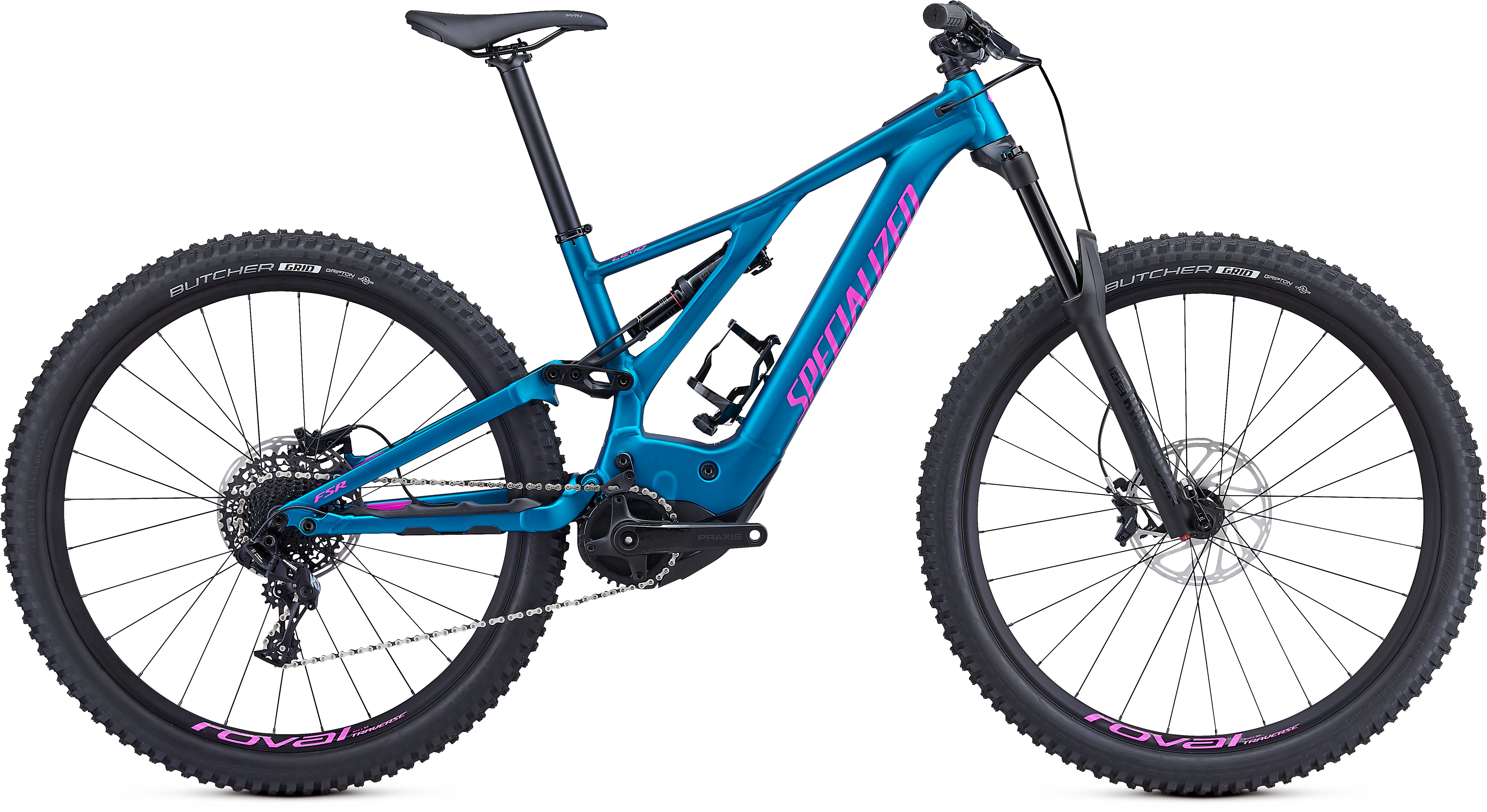Recently, we’ve kept most of the e-bike related posts to their new home, e-bikerumor.com. But every once in a while, there comes a bike that should needs to be discussed here. And among those bikes, the newest Turbo Levo from Specialized is certainly at the top. For a number of reasons.
This bike wouldn’t exist without the three plus years of development for the new Specialized Stumpjumper. This cross pollination of human powered and electric assisted bicycle design is an intriguing addition to the engineering process. The Levo benefits directly from the research and development of the Stumpy, and in the future, the Stumpy may even benefit from knowledge gained from the Levo. If your quest is to make an e-MTB that handles like a normal MTB, this seems to be the way to do it.
Maybe more importantly, Specialized is leading the way when it comes to e-MTB design. So what we see from Specialized, you better believe that it will influence the designs of other brands down the road. Before the first Turbo Levo was even a concept, Specialized created their own engineering office in Cham, Switzerland called the Turbo Innovations Center. They refer to it as an e-bike brain trust, and it basically is – currently 19 mechanical and software engineers reside there just to create the best e-bike systems possible. And that’s just the people located in Switzerland. Overall, there are 30-35 people working on each bike as part of their global product team. That’s why this Levo isn’t a collection of off-the-shelf parts assembled into a complete bike. Instead, Specialized started with the Stumpjumper DNA, and then worked with Brose to engineer their own power system with exclusive electronics and software to create the best e-MTB yet.
The biggest takeaways here are more power, dramatically increased range, and lighter weight. There’s a ton more that we’ll get to in a bit, but if you want the quick hit before you jump down to the comment section to voice your disapproval of e-bikes in general, there it is.
For those who are at least curious as to what Specialized has done to improve the Levo and make it ride better than ever, read on…
All new Sidearm Frame
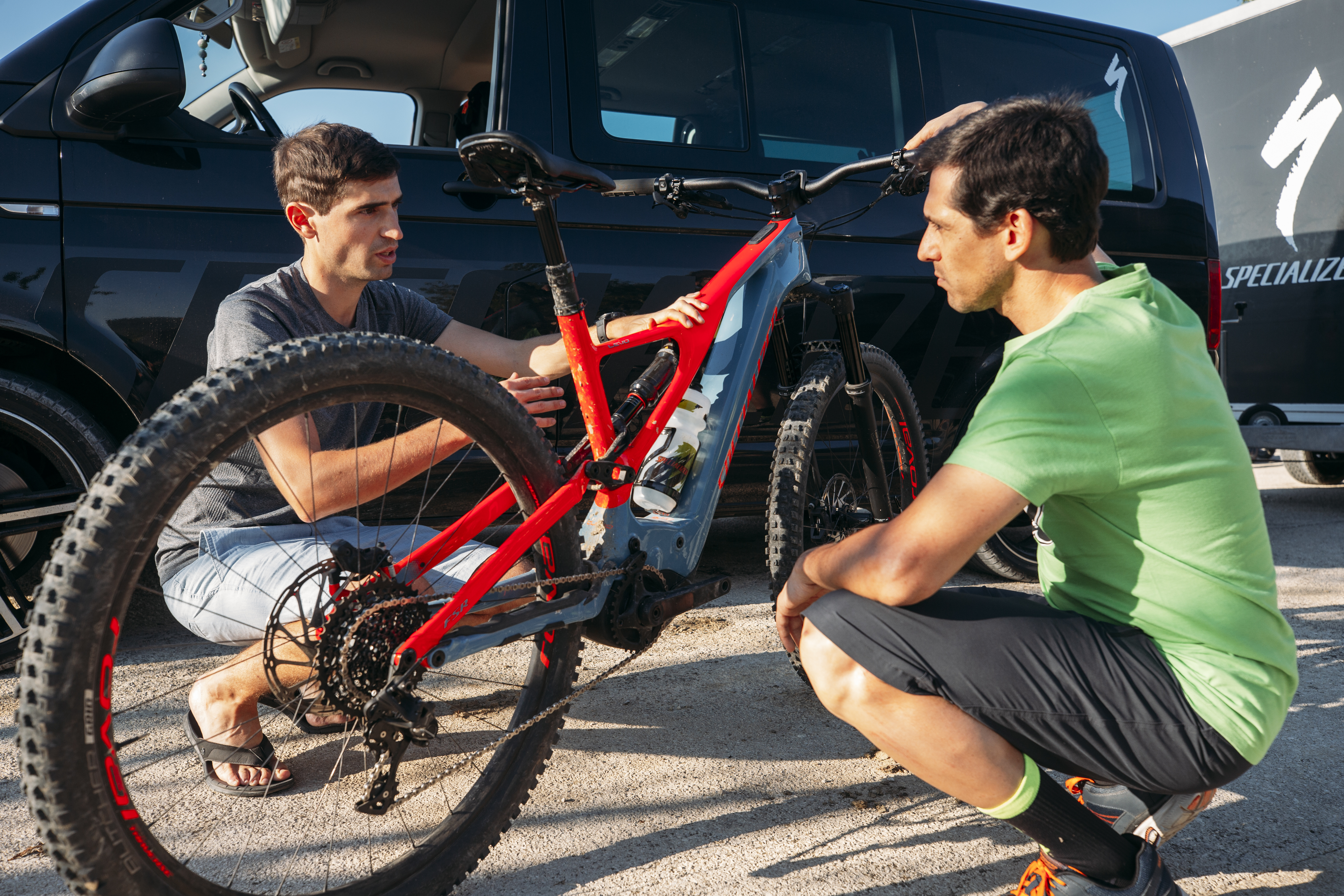
Earlier this year, we were in Spain learning what makes the new Stumpjumper so special. A huge portion of it boils down to a completely redesigned frame that increases stiffness especially when it comes to how the front and back of the bike interact. All of that knowledge has gone into creating the frame for the new Turbo Levo. The result is a frame that is stiffer, more precise, and offers more control – which is important when you’re talking about 40lb e-bikes.
Here, the Sidearm frame design is more important than ever. With the previous Levo, it was prone to flex that caused the link pivot and forward shock mount to move independently, essentially allowing undamped travel. The whole point of the frame design is to connect those two points, which forces all of the travel through the shock for better frame performance. There’s also a new link with a bridge behind the seat tube which also adds stiffness. But all of this stiffness had to be added in an intelligent way in order to keep the weight down. Part of that process involved the use of FEA to maximize their material use – which seems to have worked. The new aluminum Turbo Levo frame is lighter than the previous carbon frame. The bikes with the smaller batteries are 1.8kg lighter than the current S-Works Levo (with same sized battery), while everything with the larger batteries are still over 1kg lighter as well – with a bigger battery.
Geometry
It wouldn’t be a new frame without a new geometry. Even in the e-bike world, bikes are seeing longer reach, and more aggressive geometry. Which makes sense if you want an e-bike to handle like a regular mountain bike. The Turbo Levo sees a slacker 65.5° head tube angle, nearly 75° seat tube angle, a 24-29mm increase in reach, and all models include a flip chip in the rear shock mount which lowers the BB by 10mm, and changes the head tube angle by 1/2°.
That flip chip is an important addition since the new Turbo Levo rolls on 29 x 2.6″ tires. Previously, the Levo came with 27.5+, but Specialized decided that plus tires just didn’t offer the support needed for a heavier bike under aggressive riding, so the choice was made to build the new Levo around 29″ wheels. However, if you still want to ride 27.5+, the flip chip will adjust the geometry to better suit the slightly smaller diameter tires.
Suspension & Frame Design

All Turbo Levo models offer 150mm of rear suspension travel matched with 150mm e-bike rated forks up front. To improve the ride further, there is a new suspension kinematic to offer more progression to prevent the bike from blowing through the travel. Once again, Specialized has devoted a lot of effort to the RX tune of each bike, and the Levo has a slightly different tune with more compression damping and less air spring volume to again improve bottom out and support the mid-stroke. Each bike includes a metric shock without proprietary Shock Blocs that can be easily replaced – like to upgrade the shock on a lower end bike with something from one of the higher end models.
There are basically three levels of frame – full FACT 11m carbon on the S-Works, a FACT 9m carbon front triangle with M5 aluminum rear triangle on the Expert and Comp, and a full M5 aluminum frame on the Comp and base model. Not only is the S-Works model full carbon, it also gains a dual sided seat stay pivot for enhanced stiffness. Apparently, this may be one of those things that Specialized learned through the Levo’s development which may make its way to the Stumpjumper.
New Specialized 2.1 Brose Motor
All of that, and we still haven’t even talked about the new 2.1 motor – which is where some of the biggest improvements have occurred. The new motor is a bit of an enigma really. It’s substantially smaller in volume (15%). It’s more powerful. And somehow, it’s (a lot) lighter. And they did all of this without making the magnets smaller or doing anything to the motor that would decrease the durability or performance. In fact, the magnets in the motor are actually wider and slightly heavier to increase durability.
The previous version of the frame required a motor carrier to hold the motor in place. This carrier alone added 400g to the weight of the motor.
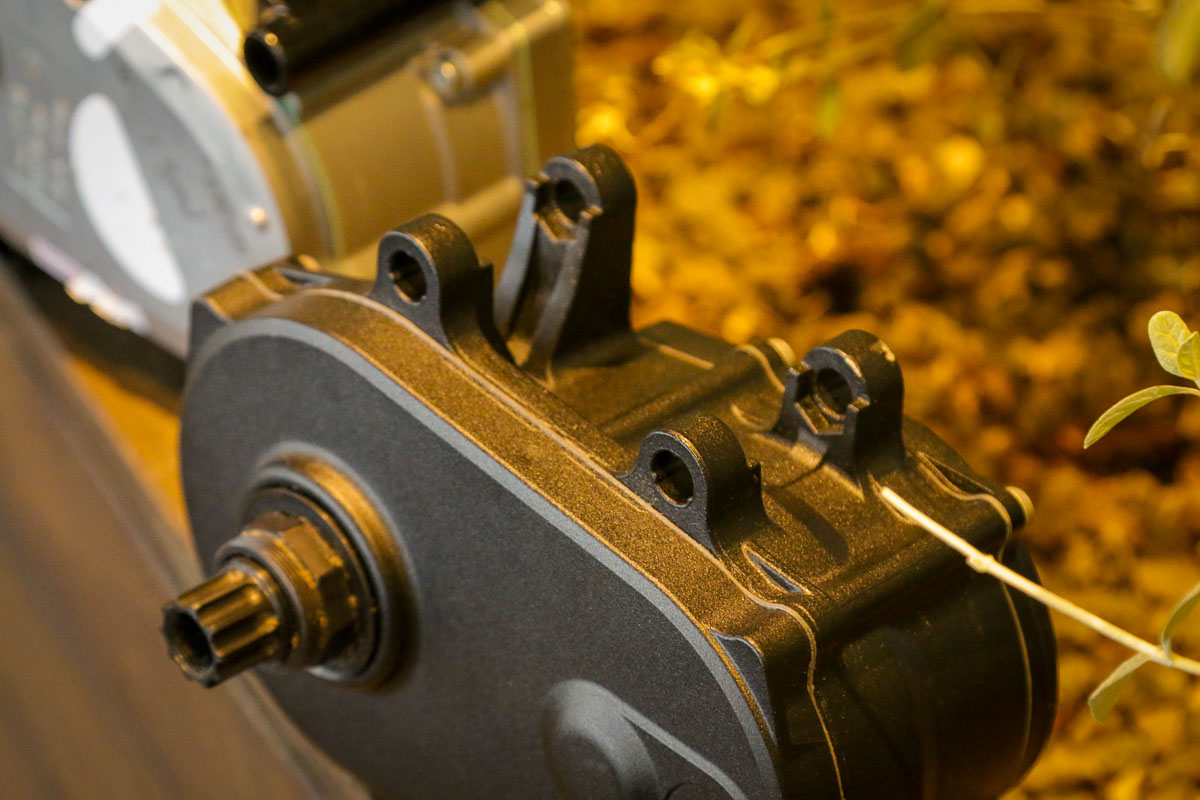 By building that mount into the motor housing itself, Specialized was able to completely eliminate that separate bracket which removed 400g from the weight of the motor. Working with Brose to build a magnesium motor housing to their needs, Specialized was able to shave another 400g from the housing for a total weight savings of 800g. Specialized points out that 800g saved at the bottom bracket results in substantially better ride quality. Apparently, Specialized worked with Brose to specify the mounting system, but you may see it on other brands of bikes in the future.The motor software however, is completely proprietary to Specialized and you won’t find it anywhere else.
By building that mount into the motor housing itself, Specialized was able to completely eliminate that separate bracket which removed 400g from the weight of the motor. Working with Brose to build a magnesium motor housing to their needs, Specialized was able to shave another 400g from the housing for a total weight savings of 800g. Specialized points out that 800g saved at the bottom bracket results in substantially better ride quality. Apparently, Specialized worked with Brose to specify the mounting system, but you may see it on other brands of bikes in the future.The motor software however, is completely proprietary to Specialized and you won’t find it anywhere else.
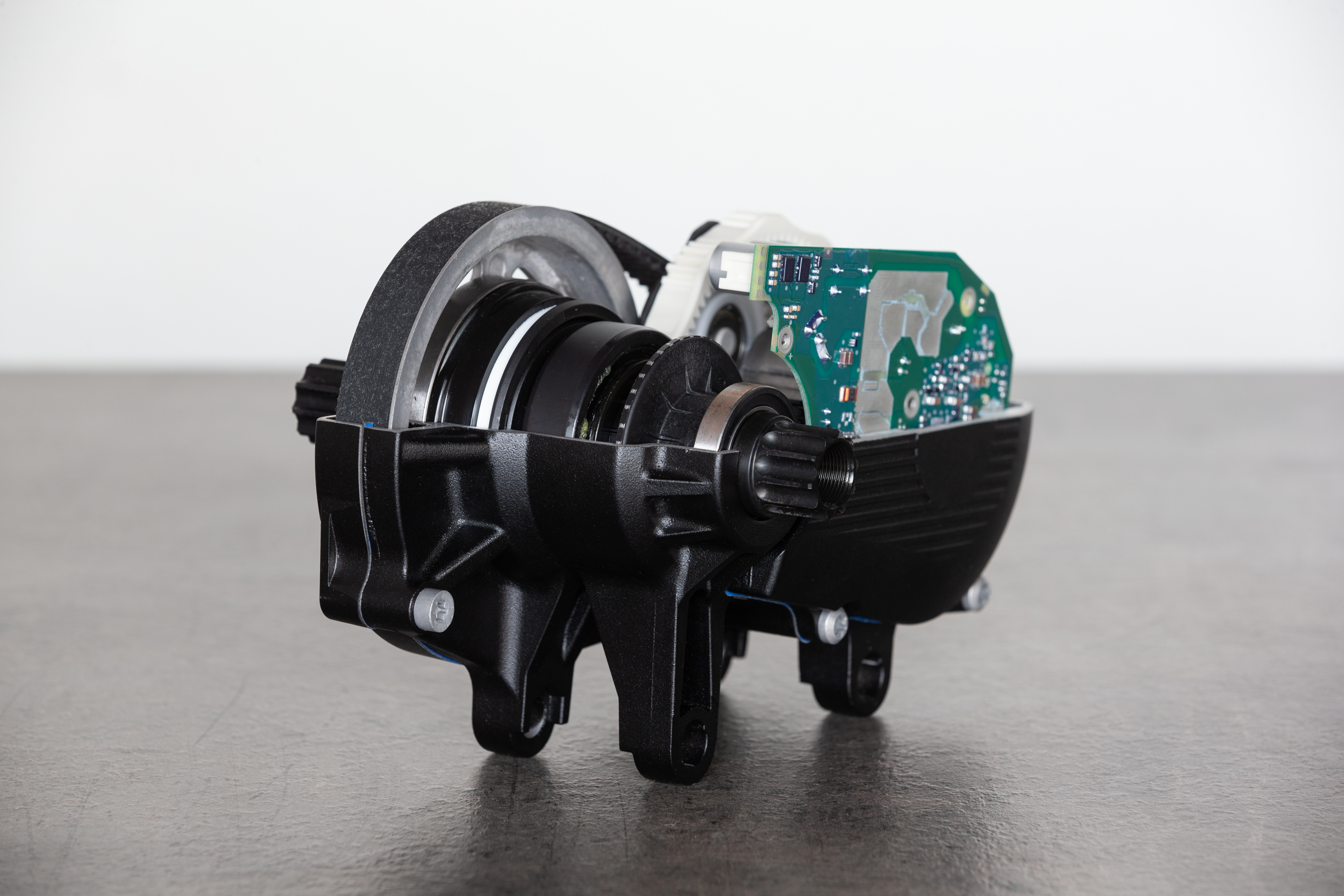
When Specialized set out to create the drive system for the new Levo, they wanted to create the smoothest, lightest, most powerful, and longest lasting system available. No small task. The new 2.1 motor includes 90Nm of torque and 560w of peak power which amplifies the rider’s input by up to 410%. Just as important is how that power comes on and is usable. The power starts higher at low RPMs, and stays high without a drastic drop off at higher cadence. Inside the motor, the main drive is still belt driven which keeps things nearly silent.
Perhaps even more critical than power, the motor is now more thermally stable. Often, e-bike motors can overheat which causes the software to reduce the amount of power to keep the motor from over heating. The 2.1 motor is the most thermal stable motor Specialized has produced, but also the most powerful. That’s partially due to all new electronics from the ground up which includes a new chipset that can withstand more heat.
New Batteries = More Juice
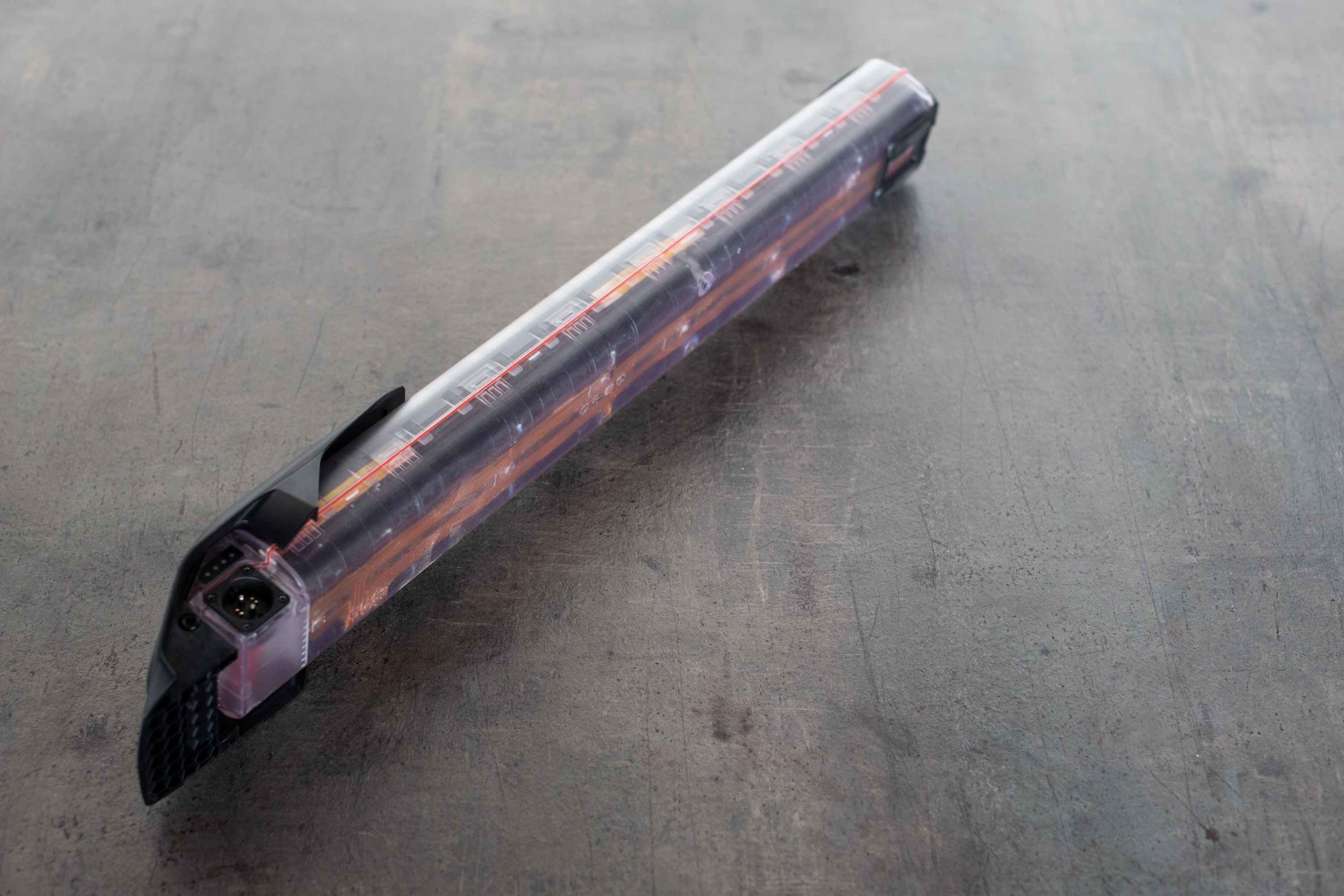
To power that motor, Specialized offers not one, but two new batteries. If their tagline is “the power to ride more trails,” you can’t do that without an efficient motor and big batteries. While the smaller battery is still the same 500Wh, the higher end bikes ship with a new 700Wh battery that allows for a crazy 40% increase in range. The new 700Wh battery is possible thanks to the use of a 21700 cell which is probably what you’ll find inside of a Tesla battery. Specialized didn’t make this claim, only stating that it’s the same cell that has become popular with electric car brands. These 40 cells are packaged in the same sized battery housing, though the 700Wh battery is 750g heavier. Even though the batteries have more capacity, Specialized was able to make the down tubes smaller in circumference.
Charging with the included smart charger is said to take about 4 hours for the 500Wh and 6 hours for the 700Wh battery. They could probably make it faster, but slower charging is better for cell health. Charging can be done with the battery on or off the bike.
The decision to move to a larger single battery rather than an add-on range extender was made so that you don’t have to have the added hassle of another battery to manage and charge, and you still have room for a full size water bottle inside the front triangle.
There’s also only one charging port which has an IP67 rating when plugged. Specialized mentioned that you shouldn’t remove the battery for washing – you should leave it in with the connector plugged.
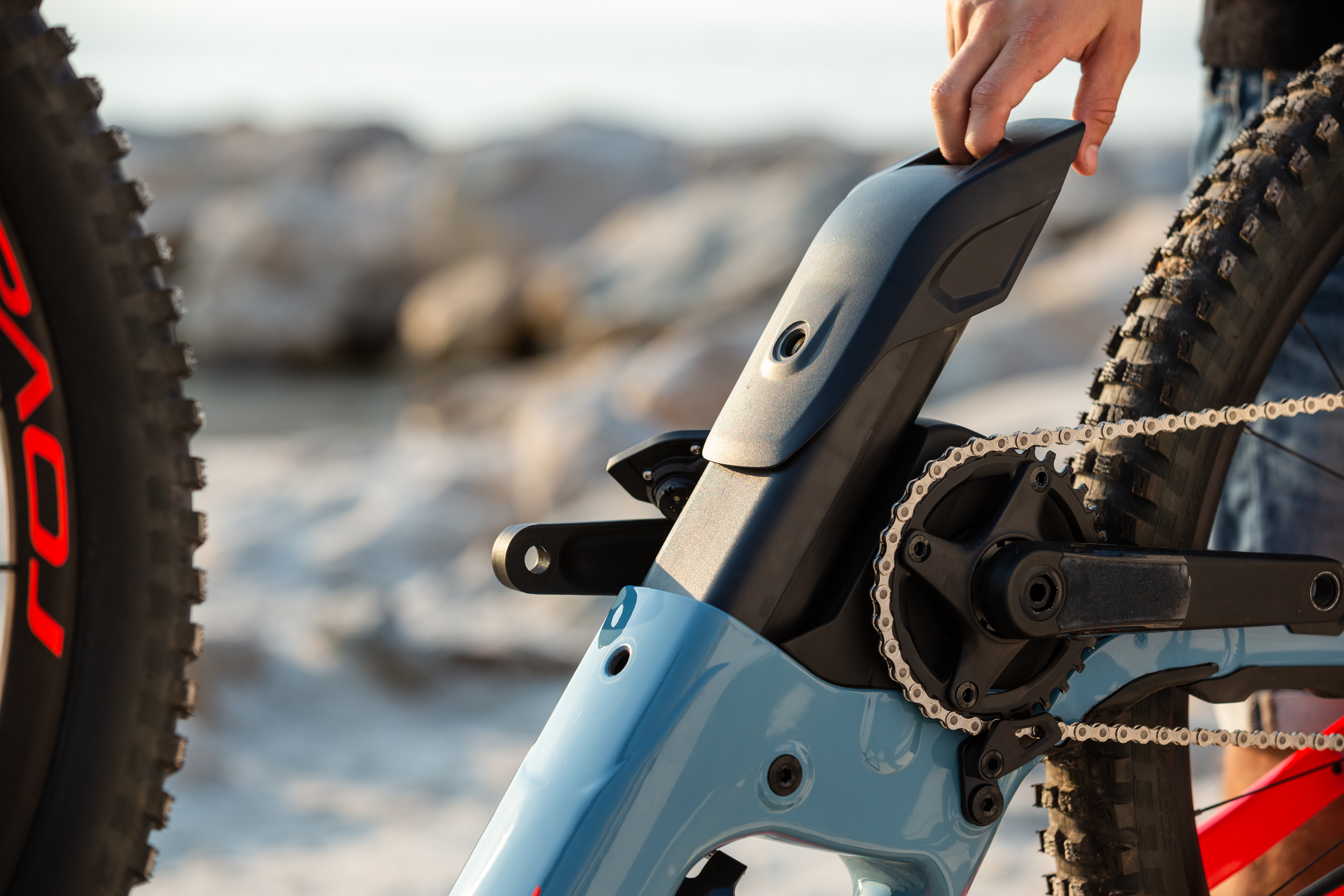
When it comes to battery integration, this time Specialized wanted to entirely close off the downtube in order to increase frame stiffness and decrease weight. But they also wanted to keep the battery installation simple and quick. Because of that, the new battery slides in from the bottom bracket area and slides into a tapered tube. The taper at the top squeezes the top of the battery in place, while a single bolt at the bottom locks the battery in the frame. The rock guard at the bottom of the battery doubles as a handle, and the whole thing is rattle free with easy access to the charging port without having to remove the battery.
New Internal Cable Routing
In order to make the battery placement work though, Specialized had to remove all of the internal cables from the downtube. Instead, they now route through the top tube and the sidearm brace, making their way down the seat tube area, where they tuck under the motor housing and exit to the chainstays. To make the dropper post work, the cable or hose actually makes a loop inside the seat tube and goes back up to the dropper. To make sure this loop wouldn’t affect the performance of mechanical droppers, Specialized created a loop rig to run on regular bikes to test the long term performance of bikes with the loop. Apparently it passed the test.

The Levo still uses a rear wheel speed sensor, but it has now been integrated into the frame just below the rear pivot on the non-drive chainstay, with the wire tucking into the chainstay for a super clean install. That sensor picks up on a magnet mounted to the 6-bolt brake rotor.
Connectivity


A lot has changed since the first Levo in terms of how the bike is controlled. The first Levo had a simple button on the side of the downtube, no handlebar mounted controls, and only had a display unit if you integrated your own with the Mission Control app. This also meant that the battery was the “brains” of the bike.
Now, the button and LED display have been moved to the top tube for easier access and the ability to see your battery level and power level as you ride. Or don’t. There’s a stealth mode available through the app which will make this display go dark when not using it if you would rather not pay attention to it.
Underneath the TCU you’ll find the diagnostic port to plug in your bike for trouble shooting. Ideally, you’ll plug it in and bring up the Turbo Studio which is meant to shorten service time and diagnoses any problems with the system. There’s also a battery backup hidden in here as well.
This Turbo Connect Unit, or TCU is also the new brains of the bike. It allows the bike to be connected to the Mission Control app via Bluetooth or ANT+ which means you can link up any third party display device. But it will also connect to the new Turbo Connect Display which is retrofittable to older models. This display is not included with each bike but available aftermarket for $80. It includes a display that shows battery percentage, clock, (human) power from the built-in power meter, heart rate, top speed, current speed, and more.
And if you want more control at your fingertips, all bikes include a handlebar mounted remote that is also removable if you don’t want it. The remote has +/- buttons to increase or decrease your assist level, a button up top that immediately sets the bike to Turbo mode no matter what mode you’re currently in, and a walk mode button underneath. Pressing and holding the walk mode button will instantly propel the bike forward to help with scrambling up steep climbs or other situations where some additional help moving the bike is welcomed.

If that all wasn’t enough, Specialized has also refreshed their Mission Control app to offer even more control. In addition to a fresh new user interface for iOS or Android, the app allows you to infinitely tune the bike as far as modes, power levels, rider amplification, and more. There are options like Shuttle Mode which switches up the power delivery from soft to an aggressive kick in – equating it to the difference between an economy car or a race car. Shuttle mode also allows the rider to get higher power at lower torque, in order to get the most out of the system. Basically, the higher the Shuttle Mode setting, the easier it is to reach full power. This is also where you can engage Stealth Mode, which hides the LED display on the top tube after three seconds (which is useful for night riding).
 Finally, the App still includes Smart Control as well. This allows you to control how much battery you want to have left after a certain amount of time. Say you’re going out for a 2 hour ride and want to have at least 25% battery left when you get home, the system will control the output of the motor to make sure you get home with close to the specified amount of juice.
Finally, the App still includes Smart Control as well. This allows you to control how much battery you want to have left after a certain amount of time. Say you’re going out for a 2 hour ride and want to have at least 25% battery left when you get home, the system will control the output of the motor to make sure you get home with close to the specified amount of juice.
Specialized points out that the app does not support hacking, it’s simply to allow you to play around with the settings within the specified parameters.
Build Spec
You may notice that not even the top end S-works model has a 12 speed drivetrain, and there’s a reason for that. According to SRAM, only the NX Eagle cassette is approved for e-bike use, and that cassette is substantially heavier than the higher end 11 speed cassettes which are e-bike approved. That meant on a bike like the S-Works model that going with a 12 speed Eagle drivetrain would have added nearly 400g with the total weight of the drivetrain parts, with a large portion of that unsprung weight in terms of the cassette. Even on the lower models, it’s still a 170g weight penalty, which Specialized felt wasn’t worth the extra gear and range on a bike that already provides plenty of assist.
The bikes will also ship with single click shifters which only allow up and down shifts in one-click increments. This is to prevent the chain from shifting multiple gears under power which could cause a failure.
Further improvements include new alloy crank arms for Expert and below which shave 100g, and new carbon crank arms on the S-Works build which drop an impressive 200g.
Otherwise, the builds include things like GRID casing 29 x 2.6″ tires that are 2Bliss Ready on all models, 150-160mm dropper posts depending on the model (small bikes have shorter 125, or 130mm posts), Specialized wheels with Boost spacing, and four piston SRAM Guide or Code brakes on all models with 200mm rotors for adequate stopping power.
S-WORKS TURBO LEVO
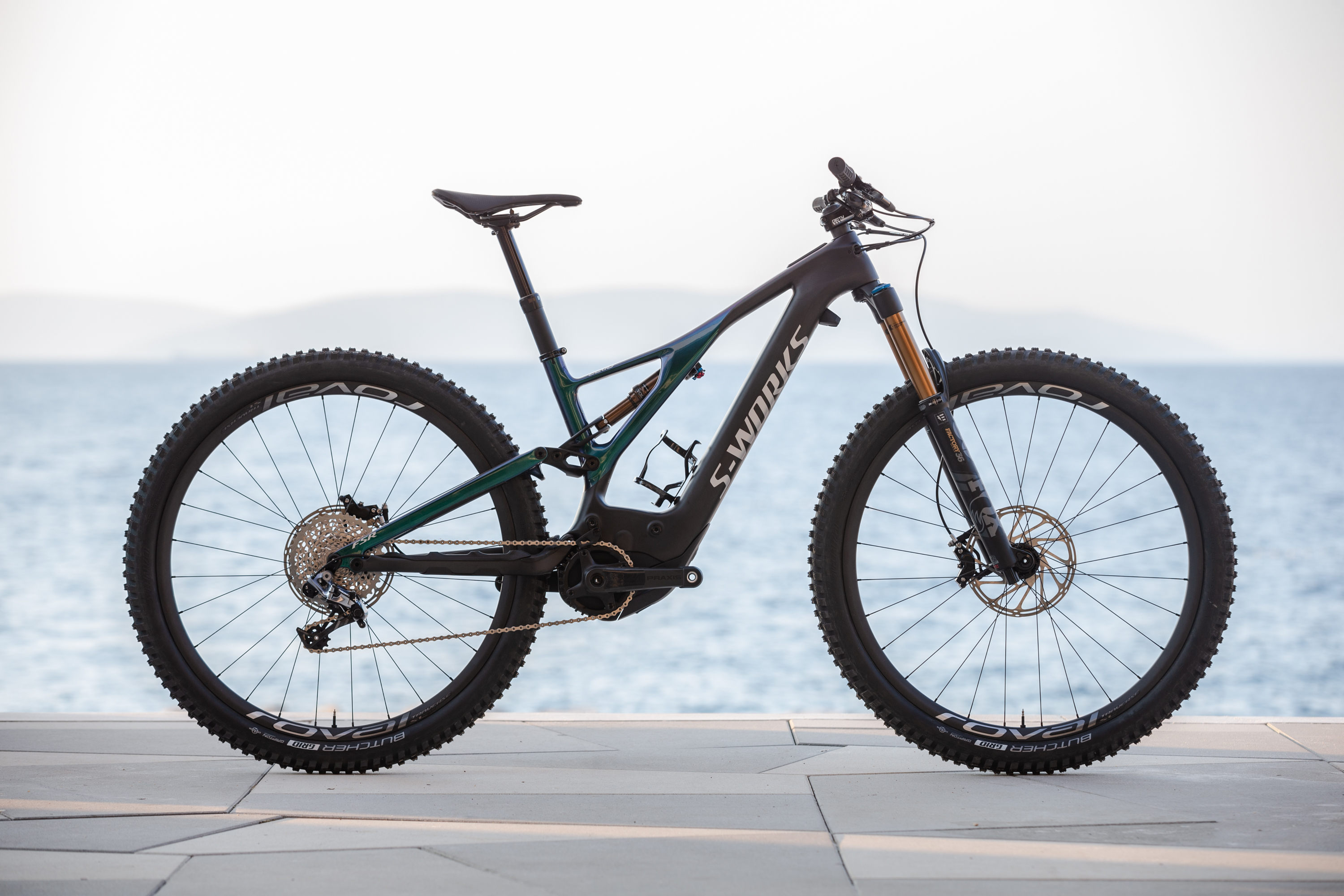
TURBO LEVO EXPERT
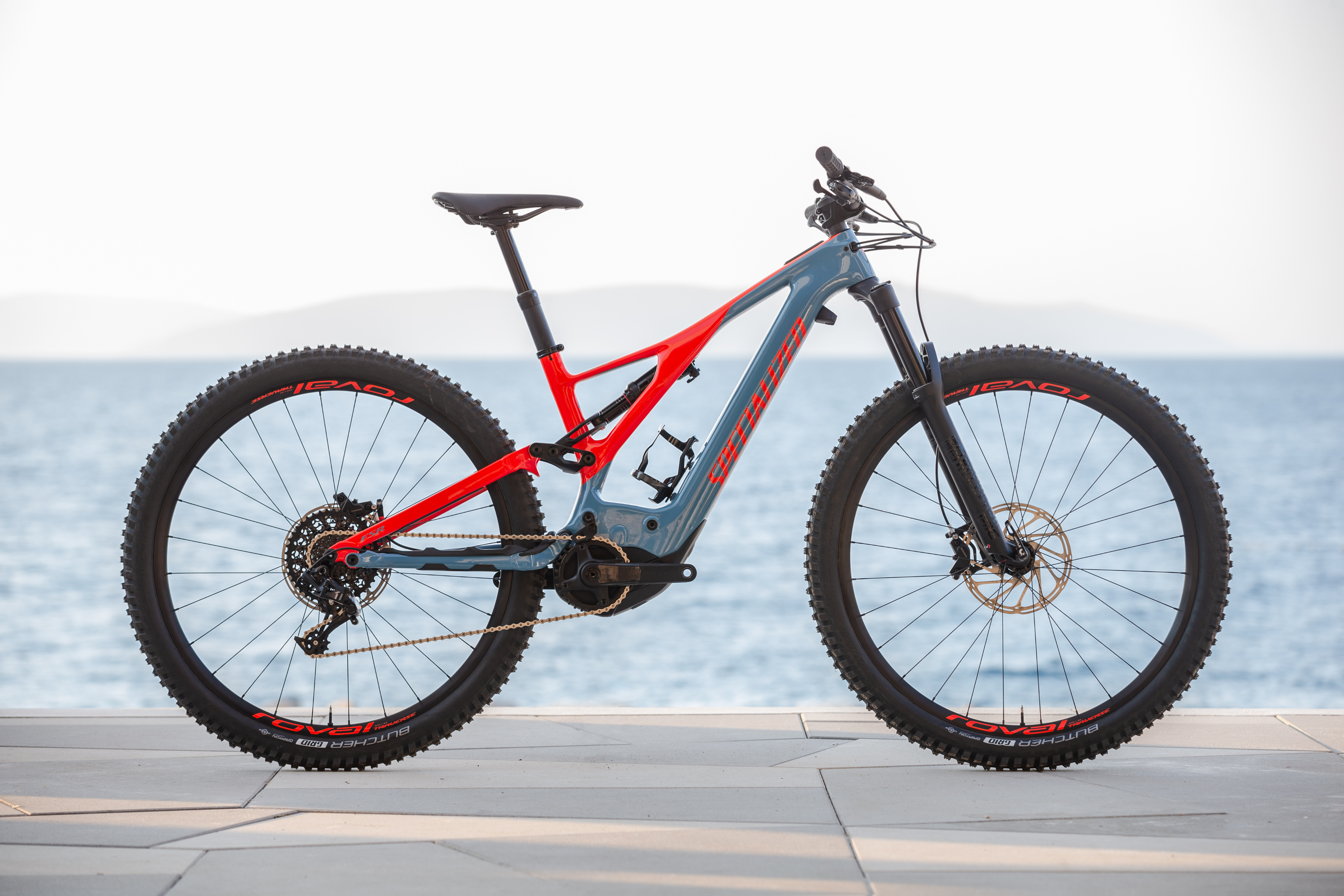
TURBO LEVO COMP CARBON

TURBO LEVO COMP

TURBO LEVO

There will be four different Turbo Levo models in “men’s” with the S-Works, Expert, Comp Carbon, Comp, and base model.
WOMEN’S TURBO LEVO COMP
WOMEN’S TURBO LEVO
It will also be available as the women’s Comp and base model, though they are the same frame – just with different touch points, suspension tune, and paint.
All of the bikes should be available now. Pricing for the U.S. is listed below.
S-Works- $12000
Expert-$8200
Comp Carbon-$6900
Comp alloy-$5900
Base-$4900


